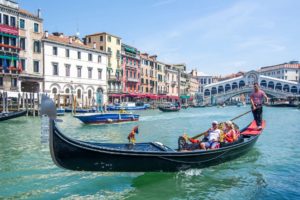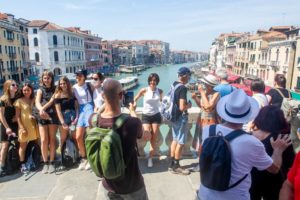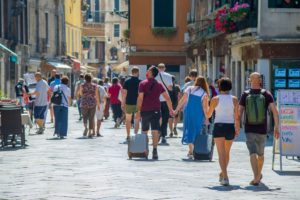-
The Ancient World
- Building Societies – What Does it Take? – Lesson
- Building Societies – What Does it Take? – Quiz
- Athens, Rome, and Jerusalem: Where Western Civilization Began – Lesson
- Athens, Rome, and Jerusalem: Where Western Civilization Began – Quiz
- Persia: Where Fake News Began? – Lesson
- Persia: Where Fake News Began? – Quiz
- Tell Brak: The World’s Most Ancient City? – Lesson
- The Key to Ancient Egypt: Rosetta Stone 200 Years On – Lesson
- The Key to Ancient Egypt: Rosetta Stone 200 Years On – Quiz
-
World History
- Slavery: An Ancient Evil That Still Exists Today – Lesson
- A Tale Of Two Sacrifices – Part I – Lesson
- A Tale Of Two Sacrifices – Part II – Lesson
- The Story Behind the Israel-Palestine Conflict – Lesson
- Churchill Vs. Hitler: Standing Up for Europe – Lesson
- War, Peace, and School Bullies – Lesson
- Survey Says: Millennials and Gen Z Just Don’t Know the Holocaust – Lesson
- V-J Day: Celebrating 75 Years Since Japan’s Surrender – Lesson
- A History of Ukraine: Battleground for Empires – Part 1 – Lesson
- A History of Ukraine: Battleground for Empires – Part 1 – Quiz
- A History of Ukraine: Battleground for Empires – Part 2 – Lesson
- A History of Ukraine: Battleground for Empires – Part 2 – Quiz
- History of the Holy Land – Quiz
-
U.S. Allies and Rivals
-
Around the Globe Today
- Chinese Uighurs – What Is Going On? – Lesson
- A New Republic – Barbados Removes the Queen as the Head of State – Lesson
- A New Republic – Barbados Removes the Queen as the Head of State – Quiz
- Venice Makes a New Rule for Tourists – Will Other Cities Follow? – Lesson
- Venice Makes a New Rule for Tourists – Will Other Cities Follow? – Quiz
- Professor Lives Underwater for 100 Days – Lesson
- Professor Lives Underwater for 100 Days – Quiz
- Setenil de las Bodegas – The Spanish Town Built Under a Rock – Lesson
- Setenil de las Bodegas – The Spanish Town Built Under a Rock – Quiz
- Hat of Napoleon Bonaparte Sells for Over $2 Million at Auction – Lesson
- Hat of Napoleon Bonaparte Sells for Over $2 Million at Auction – Quiz
- The UK Plans to Measure Kids’ Bellies to Monitor Their Health – Lesson
- The UK Plans to Measure Kids’ Bellies to Monitor Their Health – Quiz
-
Politics and Economics Around the Globe
Venice Makes a New Rule for Tourists – Will Other Cities Follow? – Lesson

(Photo by Luca Zanon/Awakening/Getty Images)
How are officials responding to the number of tourists entering their cities?
Tourism can have a lot of positive effects on a city or country. It helps bring money, supplies jobs, and promotes improvements in the area. But can there be too much of a good thing?
The city of Venice, Italy, has its target set on day-trippers. Officials have agreed to charge a fee for every visitor entering the beautiful “Floating City.” The final details have not yet been decided, but for now, visitors will pay a fee of €3 to €10 (3-10 euros) per person for admittance.
A medieval city built on 118 small islands, Venice is one of the most popular tourist destinations in the world. People travel to the area to see the famous canals and gondolas, bridges, old buildings, and art works of the Italian Renaissance. About 20 million people visit the city every year. Compare that to the number of people who actually live in the city – only about 200,000. That means there are 100 times more tourists than residents in Venice each year! Some believe the huge number of tourists has caused some problems.

(Photo by Luca Zanon/Awakening/Getty Images)
Those who visit the historic location for the day do little to benefit the economy and are clogging the streets. They also put a strain on its infrastructure, like roads and bridges. Venice officials saw the need to make some changes, not only for the locals and the city itself but also for the longer-term tourists who promote the area’s popularity and spend the money that helps its economy.
Venice’s Tourist Charge
The new rule has had mixed responses from Venice residents and business owners. A leading Italian newspaper, Corriere della Sera, commented: “Venice is becoming more and more like Disneyland.”
Others feel that a fee alone is not enough to reduce the wave of people that enter the city each day. Jane da Mosto, the head of a group named We Are Here Venice, believes officials should limit the number of people who can enter each day. “The number of tourists should mirror the number of residents to assure people a more authentic experience. Having a ticketing system is meaningless unless there is an explicit cap on the number of visitors allowed into Venice at any one time,” Mosto said.

Those who wrote the rule change say their goal is the city’s preservation, not to make money. They defend their actions by saying, “The aim of the measures is not to cash in but to protect Venice. The city with its frailties isn’t suitable for ‘fast food’ tourism.”
Is Over-Tourism a Problem?
Modern tourism traces back to the 1600s when young, upper-class European men would complete what was called the Grand Tour. The journey consisted of a trip around Europe. The sightseers were interested in learning about other cultures, visiting landmarks, learning new languages, and experiencing different cuisines. Over 400 years later, the tourism industry is booming. Though COVID-19 took its toll, post-pandemic numbers show a dramatic increase in travelers.

(Photo by Luca Zanon/Awakening/Getty Images)
While tourism can bring a lot of benefits to a region, over-tourism can also have adverse effects, including high levels of pollution, over-crowding, increased cost of living for residents, damaged property, and tension between tourists and locals.
Venice is not the only place finding new ways to deal with the wave of tourists after the pandemic. The city of Barcelona, Spain, has limited groups to a maximum of 15 people entering at once. Japan has yet to open its borders to visitors even while facing a two-decade low in the value of the yen (Japanese currency). Airbnb, a company that helps people rent out their homes to tourists, is trying to reduce the effects of over-tourism by coaxing customers to visit places that aren’t so famous.
The common phrase “all things in moderation” might apply here. As it gets easier for more people to travel and vacation around the world, how can locations find a balance between the benefits and drawbacks of tourism?